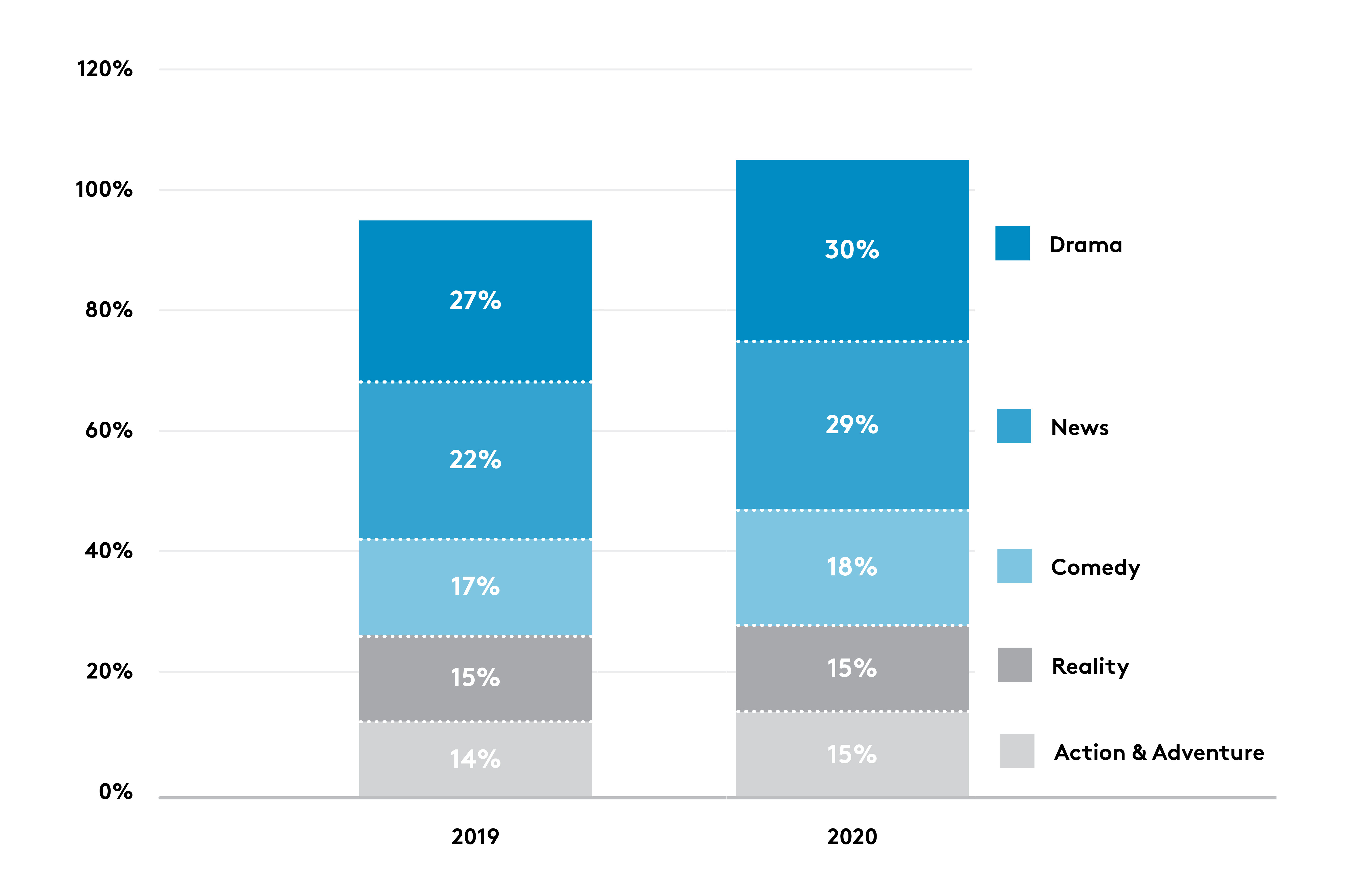
PHILADELPHIA—The habits of TV viewers over the past two months have been altered because people are spending more time at home due to the coronavirus pandemic, according to a new report from Comcast.
The most obvious change is in the number of hours spent watching TV, the nation’s largest cable TV provider noted. Since early March, viewership has surged eight hours a week per household, from 57 hours a week to 66 hours, comprising an extra workday’s worth of content. Consumption of streaming and web video has jumped 35% across Comcast’s entire broadband network.
But it’s not only the increase in viewing hours that’s changed. It’s also viewing habits and the type of TV programming that has changed as well.
“We are seeing new behaviors we haven’t seen before, e.g., shifts in daily viewing patterns, changes in when programming is being watched and ways content is being accessed,” the company said in its report.
The people who are fortunate to still hold 9-5 jobs and can work from home can still distinguish between the work week and the weekend, however even for them, the pandemic is causing many to lose track of what day it is. Whereas weekends used to see the largest amount of TV consumption, that is no longer the case, Comcast said.
“COVID-19 is blurring weekday and weekend viewing levels and habits; Monday is a more popular viewing day than Saturday,” Comcast said. “What our customers are likely feeling in self-isolation—that all the days are blurring together and it’s hard to tell which day is which—is reflected in daily TV trends we observed.”
PLUS: TV Viewers Take Advantage of More Streaming Choices During Pandemic
The professional video industry's #1 source for news, trends and product and tech information. Sign up below.
What they’re watching and when is also changing. Not surprisingly, viewers are watching a lot more news—viewing has jumped 64% since the start of the pandemic two months ago, peaking during the last week of March when the number of global Covid-19 cases topped 1 million. News consumption has leveled off, with viewing down 30% since then.
Beyond news, the type of fare hasn’t changed all that much. Comcast said interest in dramas—typically the most popular genre in normal times—increased from 27% to 30%, followed by news (29%), comedy (28%), reality (15%) and action and adventure (15%).
We’re also watching later at night. Comcast has seen a 40% upswing in viewing during the late-night hours, with the largest increases happening between 11 p.m. and 2 a.m. Early morning viewing between 6 a.m. and 8 a.m. has dropped 6%.
DVR usage is down but VOD consumption has jumped 50% over the past two months. Viewers are also looking for new content—Comcast said it has seen double-digit growth in discovery related voice commands such as “what to watch” and “surprise me.”
Tom has covered the broadcast technology market for the past 25 years, including three years handling member communications for the National Association of Broadcasters followed by a year as editor of Video Technology News and DTV Business executive newsletters for Phillips Publishing. In 1999 he launched digitalbroadcasting.com for internet B2B portal Verticalnet. He is also a charter member of the CTA's Academy of Digital TV Pioneers. Since 2001, he has been editor-in-chief of TV Tech (www.tvtech.com), the leading source of news and information on broadcast and related media technology and is a frequent contributor and moderator to the brand’s Tech Leadership events.


